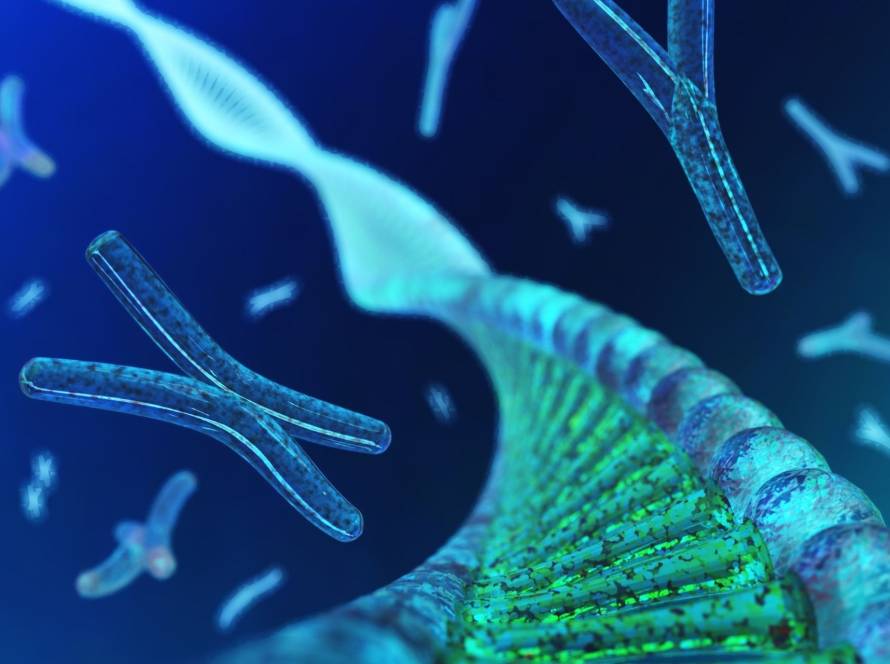Signaling molecules act as invisible messengers that orchestrate cell communication throughout our bodies. These chemical signals influence vital processes like cell development, tissue formation and immune responses, even though we can’t see them.
In this piece, we’ll explore everything about these cellular messengers, their mechanisms and their impact on human health.
What are signaling molecules and why they matter
Cell communication stands as one of biology’s most essential processes. Every second, cells engage in millions of molecular conversations that orchestrate everything from development to fighting off pathogens.
Definition and core function
Signaling molecules serve as chemical messengers that carry information between cells. These biomolecules bind to receptors as ligands and trigger changes in cell behavior. These molecular messengers coordinate biological activities throughout tissues, maintain homeostasis and help organisms adapt to environmental changes.
The structure of these communication molecules ranges from simple gasses to complex proteins. Their variety lets them control countless biological processes with precision, which makes them vital to normal physiology and disease pathology. Some molecules work quickly but briefly, so they provide quick, short-term responses to immediate challenges.
Chemical signaling in multicellular organisms
Scientists believe chemical signaling mechanisms existed in single-celled organisms long before multicellular life emerged.
Multicellular organisms have developed much more complex signaling systems. Higher animals don’t just use a few peptides, they use hundreds of different signal molecules. These include proteins, small peptides, amino acids, nucleotides, steroids, retinoids, fatty acid derivatives and even dissolved gasses like nitric oxide.
Four main categories of chemical signaling exist in multicellular organisms:
- Paracrine signaling: acts on nearby cells through diffusion;
- Endocrine signaling: uses the circulatory system to move hormones to distant targets;
- Autocrine signaling: affects the signaling cell itself;
- Direct signaling: happens across gap junctions between adjacent cells.
The key difference between these categories lies in how far signals travel to reach target cells. Paracrine signals create quick, short-lived responses because enzymes break down the signaling molecules or nearby cells remove them.
Ligand-receptor interaction basics
Cells need specific receptors to detect and respond to a signal molecule. A ligand changes the receptor’s shape or activity when it binds, which sets off a chain of changes inside the cell.
Two main types of receptors exist. Cell-surface receptors (transmembrane receptors) bind water-soluble, polar ligands that can’t pass through the plasma membrane. Internal receptors (cytoplasmic receptors) respond to hydrophobic ligands that can diffuse across the membrane, including steroid hormones.
Ligand-receptor interactions’ specificity determines which cells respond to specific signals. The strength and duration of binding, called affinity, determines how potent and long-lasting the cell’s response will be. This amazing selectivity allows targeted communication in organisms with billions of cells.
Classes of cell signaling molecules
The body’s signaling molecules show amazing diversity that enables precise control of cellular activities in tissues and organs of all types. These molecular messengers can be grouped into distinct categories based on how they work and their chemical properties.
Hydrophobic molecules
Hydrophobic signaling molecules easily pass through plasma membranes because they dissolve in lipids. Steroid hormones stand out as the best examples here, including estradiol (female sex hormone), testosterone (male sex hormone) and cholesterol. Scientists have found these molecules come from cholesterol and share a unique structure with four fused hydrocarbon rings with different functional groups attached to their carbon skeleton. These hydrophobic signals move through the cell membrane and bind to receptors inside the cell, mostly in the cytosol or nucleus. Thyroid hormones, vitamin D3 and retinoic acid work the same way, moving through membranes to reach their target receptors.
Hydrophilic molecules
Water-soluble signaling molecules behave differently from their hydrophobic cousins, they can’t pass through the plasma membrane by themselves. These polar molecules, mostly peptides, proteins and modified amino acids, only bind to receptors on the cell surface. Neurotransmitters like glutamate, GABA and dopamine, serve as vital chemical messengers between neurons. Peptide hormones, growth factors and amino acid derivatives also work through membrane receptors to trigger complex responses inside cells.
Gaseous molecules
Gaseous signaling molecules make up a unique class of mediators that scientists once thought were just toxic substances. Nitric oxide (NO) has a surprisingly short half-life of 5-10 seconds and moves faster through membranes to control blood vessel dilation, neurotransmission and immune responses. Carbon monoxide (CO) works in a similar way as both a neurotransmitter and signaling molecule at normal body levels. H2S, the third major gasotransmitter, plays significant roles in heart function, brain processes and fat cell metabolism. These gasses don’t have traditional receptors but interact with proteins of all types to influence cell activities.
Metabolite-based signals
Metabolites themselves work as powerful messengers beyond traditional signaling molecules. Let’s take a closer look at lactate, once seen as just a byproduct of glycolysis. It now works through its receptor G protein-coupled receptor 81 (GPR81) to affect fat metabolism, immune function and tissue repair. On top of that, it moves between cells to provide energy and regulate redox states. Succinate also works both inside and outside cells through succinate receptor 1 (SUCNR1), connecting metabolism with inflammation and immune regulation.
How signals travel and stay active
Signaling molecules start an amazing trip through the body that showcases nature’s engineering brilliance. These chemical messengers must find their way through complex cellular environments. They need to stay functional long enough to deliver their messages effectively.
Diffusion vs active transport
Signaling molecules move through two main mechanisms. Small, uncharged, or hydrophobic molecules like oxygen, carbon dioxide and steroid hormones use passive diffusion. These molecules freely cross plasma membranes without using energy. They simply travel from areas with high concentration to those with lower concentration. In stark comparison to this, hydrophilic molecules need help from specialized membrane proteins. These proteins create water-filled channels or act as carriers that change shape to transport specific molecules across membranes.
Molecules must sometimes move against their concentration gradient. This process needs active transport powered by ATP transporters. The Na⁺-K⁺ pump serves as a vital example that maintains ion gradients essential for neural signaling.
Carrier proteins and vesicle packaging
Carrier proteins bind to hydrophobic signaling molecules to help them move through watery environments. These molecules can cross cell membranes to reach intracellular receptors after release. Protein-based signals need vesicle-mediated processes for proper storage and release. To name just one example, neurotransmitters stay in synaptic vesicles until the right stimulus triggers their release through exocytosis.
Signal stability and degradation
A signaling molecule’s effectiveness depends on how long it lasts. Nitric oxide gas breaks down quickly with a half-life of 5-10 seconds, creating fast, localized effects. This breakdown rate affects response speed substantially, shorter-lived molecules allow faster concentration changes. Paracrine signals must either enter neighboring cells or break down quickly through extracellular enzymes to stay local.
Role of extracellular matrix in signal movement
The extracellular matrix (ECM) does more than provide structural support. It regulates how signaling molecules spread and function. The ECM holds many growth factors, cytokines and chemokines that release during tissue remodeling through protein breakdown. The ECM’s components also work with cell receptors like integrins. This interaction changes how cells respond to various signals and can alter their biological effects.
Real-world applications and health implications
When cellular communication networks break down, diseases often follow. These signaling molecules are vital targets for treatment. Learning about these molecular conversations helps us understand both diseases and possible treatments better.
Signaling molecules in cancer and immune response
Cancer develops when normal signaling goes wrong. Autocrine signaling is a good example of this process. Cells make their own growth factors and stimulate themselves to multiply, which leads to uncontrolled cancer cell growth. Cytokines play two different roles in cancer. They can fight tumors or help them grow. The FDA approved interferons and interleukins to treat melanoma, lymphoma, leukemia and renal cell carcinoma. New immunotherapies have mostly replaced these treatments. Many breast and ovarian cancers show high levels of EGF receptors, which affects how these cancers grow.
Hormonal imbalances and metabolic disorders
Chemicals that disrupt the endocrine system can affect health in many ways. Research shows that some phthalates link to ADHD behaviors and higher risks of preterm birth. Problems with redox balance play a key role in diabetes. Reactive oxygen species change how insulin works. Too much ROS leads to insulin resistance. Fat cell signaling also affects metabolic health. Mice without working Gi proteins in their fat cells showed poor glucose control and reduced insulin sensitivity, especially when eating high-fat diets, according to research.
Therapeutic use of signaling molecule supplements
Doctors are seeing good results with signaling molecule therapy. H2S donors are in Phase II clinical trials for bypass surgery patients because they protect the heart. Many supplements claim to have “cell signaling molecules,” but we don’t have enough clinical evidence to back these products. These supplements want to:
- Improve immune system health;
- Support cardiovascular function;
- Enhance wound healing;
- Improve gut health.
Emerging research on βOHB and H2S
H2S protects cells remarkably well. It shields neurons and heart tissue from oxidative stress. This molecule helps neurons by fixing glutathione levels and reducing mitochondrial oxidative stress. H2S also helps strengthen connections in the hippocampus by boosting NMDA receptor activity, which might help with thinking and memory. Research shows H2S could help treat atherosclerosis, ischemia-reperfusion injury and inflammation. People who eat lots of organosulfur compounds from garlic and onions tend to live longer and healthier lives. These compounds release H2S when they meet cellular reductants like glutathione.
Modern research techniques help us monitor and control these molecular conversations better. This advancement opens doors to individual-specific approaches based on each person’s signaling molecule profiles. Our cells’ ongoing dialog holds keys to understanding wellness and disease, making this field vital to the future of longevity science.


